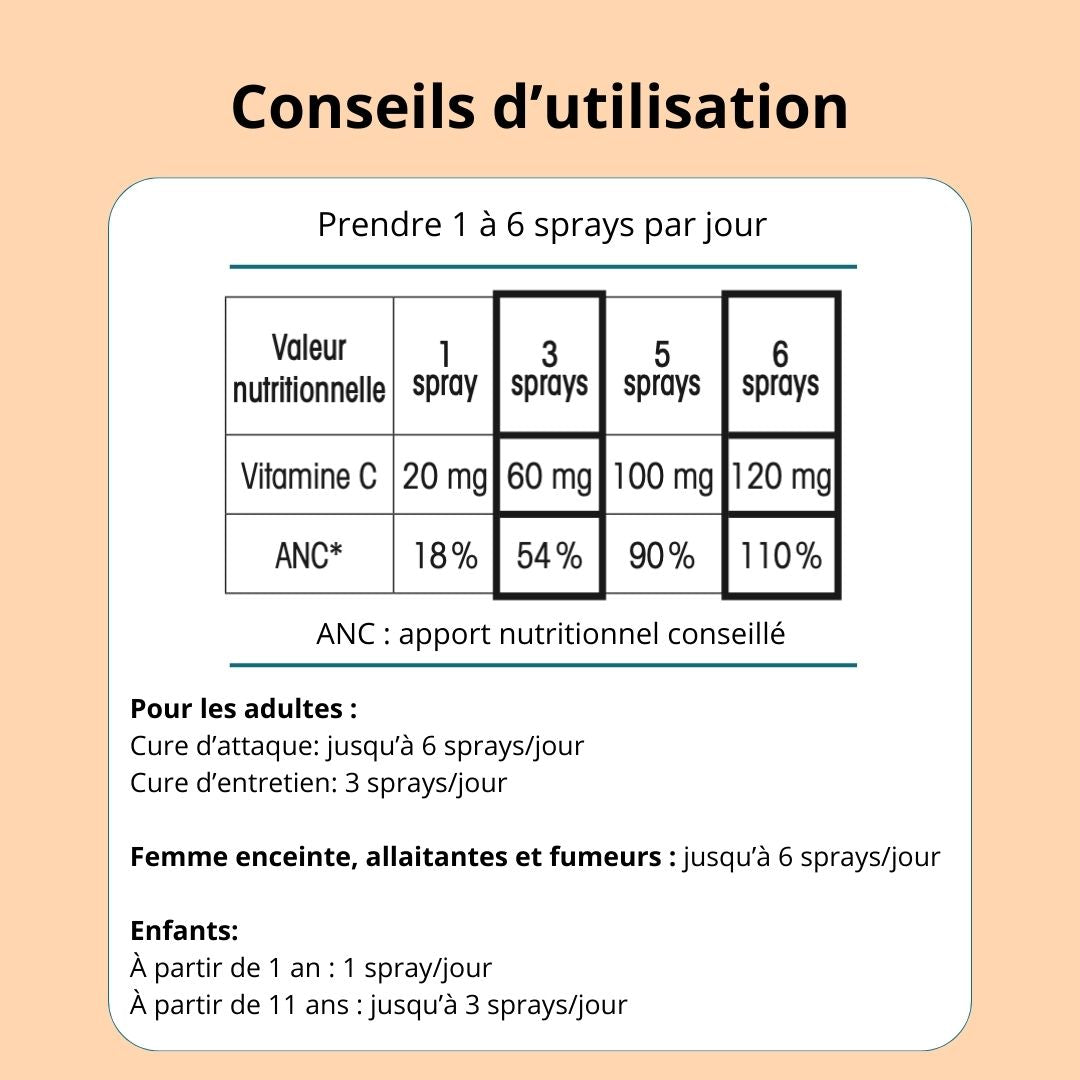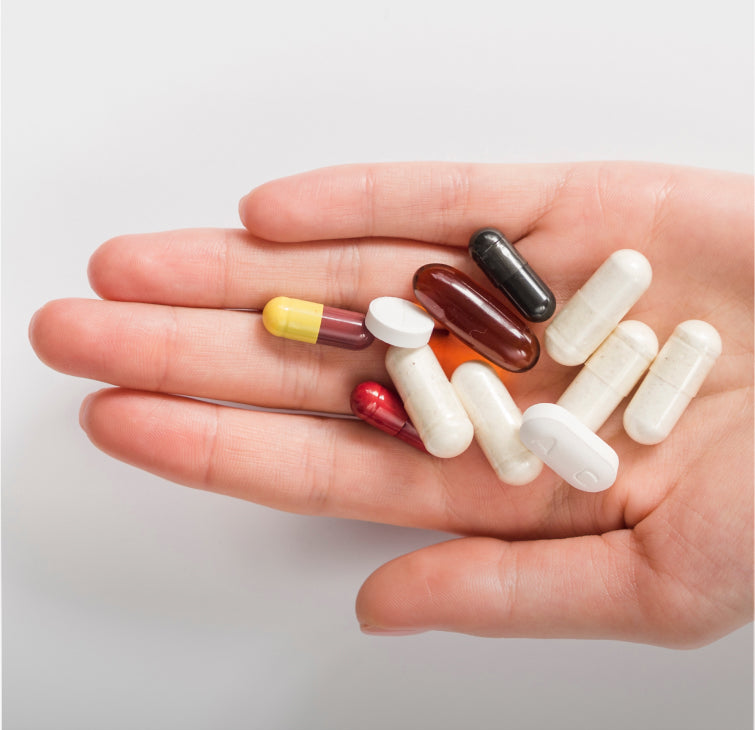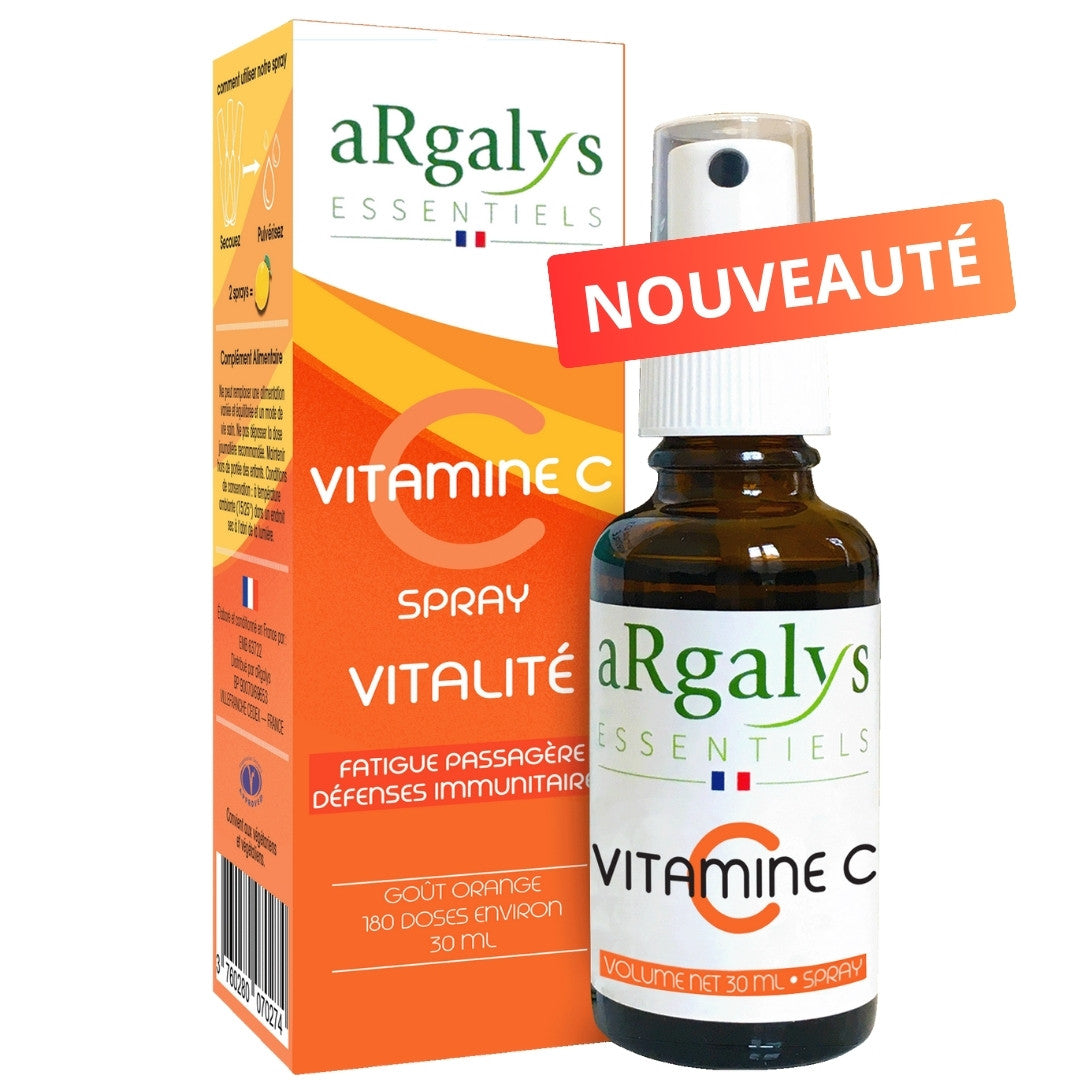Vitamin C in daily use
Vitamin C, a water-soluble organic acid, is an essential nutrient that the human body cannot synthesise due to a mutation that inactivates the L-gulono-gamma-lactone oxidase gene in primates, including humans [1]. Other animals, such as dogs, are able to synthesise ascorbic acid.
For humans, it is therefore an essential vitamin: it must therefore be provided in the diet or by supplements to maintain adequate levels in the body.
Its role as an enzyme cofactor is essential and vital to the human metabolism.
Vitamin C deficiency (scurvy) leads to death within a few weeks as a result of metabolic breakdown, including protein synthesis.
Role and benefits of vitamin C:
Vitamin C is a key cofactor for multiple biological processes ranging from :
- Protein synthesis (including collagen).
- The synthesis of neurotransmitters.
- The binding of non-haem iron in the blood.
In moderate doses, its antioxidant role protects cells against free radicals, helping to reduce oxidative stress and prevent associated diseases, such as cardiovascular disease and certain cancers.
In 2012, the European health authorities (EFSA, European Food Safety Authority and the European Commission) [2] listed the following health claims for vitamin C.
After examining the scientific data, it has been determined that Vitamin C contributes to :
- The normal formation of collagen, necessary for the normal functioning of blood vessels, bones, cartilage, skin, teeth and gums.
- Normal energy metabolism,
- Normal functioning of the nervous system,
- Normal mental functions,
- Normal functioning of the immune system*.
- Reducing fatigue,
- Regeneration of vitamin E in its reduced form,
digestive absorption of iron, - Protecting cells against free radicals (antioxidant effect).
All these claims are valid for intakes of at least 12 mg of vitamin C (ascorbic acid) per 100 g, 100 ml or per portion, with the exception of the claim for normal functioning of the immune system, which is valid for 200 mg.
Dietary intake of ascorbic acid
Its presence in the diet is of crucial importance, as the human body is unable to synthesise it endogenously.
Citrus fruits, berries, peppers, kiwi fruit and leafy green vegetables are among the richest natural sources of vitamin C.
It should be noted, however, that its bioavailability varies according to the cooking and storage methods used.
In practice, the real dietary intake comes from fresh fruit and vegetables (the equivalent of 2 to 3 lemons a day for an intake of 100 mg), which is the main reason behind the "5 fruit and vegetables a day" recommendation!"
Dosage (Recommended Daily Allowance - RDA): the virtues of moderation
The Recommended Daily Allowance (RDA) varies according to age, sex and other individual factors. [3]
In Europe, the average RDA for adults is 100 milligrams of vitamin C per day. In France, the Recommended Dietary Allowance is 110 mg/day, with average observed intakes of around 90 mg.
However, occasionally higher doses (up to 200mg) may be required under specific conditions, such as:
- Inflammatory conditions
- Stress
- Post-operative recovery.
Smoking also increases vitamin C requirements (+20 to 50 mg/day).
Maximum dose of vitamin C and associated risks.
To date, the European authorities have not defined a safety limit (maximum dose) for vitamin C.
However, it is essential to take into account the reversal of the oxidative role of vitamin C at high doses (over 500 mg/day).
Vitamin C is a good antioxidant in moderate doses, but becomes pro-oxidative in high doses, particularly when interacting with iron (Fenton's reaction). The AFSA report (SA0315) states:
"Even if the pro-oxidant effects of vitamin C described to date need to be confirmed by other studies, the data in the literature agree on pro-oxidant effects from intakes of 500 mg/day ..... These pro-oxidant effects are therefore specific to vitamin C taken as a supplement to the diet, insofar as only supplements can enable the dose of 500 mg/d to be reached".
The two mechanisms of vitamin C absorption
Vitamin C can be absorbed through the intestine or sublingually.
Intestinal absorption of vitamin C
This is the absorption mechanism involved in taking capsules or tablets.
Intestinal absorption of vitamin C occurs mainly in the duodenum and jejunum, via an active (energy-intensive) and saturable transport mechanism.
The fact that it is 'saturable' explains the lower absorption of high doses of vitamin C.
Once in the bloodstream, it is distributed throughout the body and accumulated in the tissues.
Mechanism of sublingual absorption of vitamin C
Sublingual absorption takes place directly into the bloodstream, bypassing the digestive system and preventing vitamin C from undergoing gastric enzymatic degradation.
By applying the solution directly under the tongue, the blood capillaries in the oral mucosa allow virtually immediate absorption of nutrients into the bloodstream, bypassing the first-pass liver digestion process.
This administration is particularly suitable for individuals with gastrointestinal problems, as it avoids the potential stomach and intestinal irritation associated with high doses of vitamin C.
Poor absorption of mega-doses of vitamin C
Pharmacokinetic studies indicate that plasma concentrations of vitamin C reach a plateau after relatively low doses (of the order of RDA doses), and that active intestinal absorption of higher doses is saturable.
High doses of vitamin C are useless if taken over a long period*. Maximum plasma concentration (around 70 µmol/litre) is rapidly achieved with intakes of 80/100 mg of vitamin C per day. It does not increase with higher doses, which are mainly eliminated in the urine[4].
Excess vitamin C is mainly excreted in the urine without being used by the body: hence the importance of moderating the dosage and dividing up the intake for optimum use. With an intravenous injection of 1 gram, urinary elimination is measured at around 85% of the dose. [5-6]
*In the case of infections (colds, etc.), it is accepted that higher doses over a few days (200/300 mg/day may have a positive effect) [7].
Bibliographie :
- Nishikimi M, Koshizaka T, Ozawa T, Yagi K. Occurrence in humans and guinea pigs of the gene related to their missing enzyme L-gulono-gamma-lactone oxidase. Arch Biochem Biophys. 1988 Dec;267(2):842-6.
- EFSA : https://www.efsa.europa.eu/en/efsajournal/pub/3418
- Anses : https://www.anses.fr/fr/content/vitamine-c
- Pharmacocinétique de la vitamine C chez des volontaires sains : preuves pour un apport nutritionnel recommandé : https://pubmed.ncbi.nlm.nih.gov/8623000/
- Absorption de l'acide ascorbique chez l'homme : A Comparison among Several Dosage Forms. https://www.sciencedirect.com/science/article/abs/pii/S0022354915440729)
- Taux d'excrétion de la vitamine C dans l'urine humaine : https://link.springer.com/article/10.1007/BF02435011
- Hemilä H, Chalker E. Vitamin C for preventing and treating the common cold. Base de données Cochrane des revues systématiques 2013, numéro 1. Art. No. : CD000980.







 04 74 03 98 80
04 74 03 98 80


















